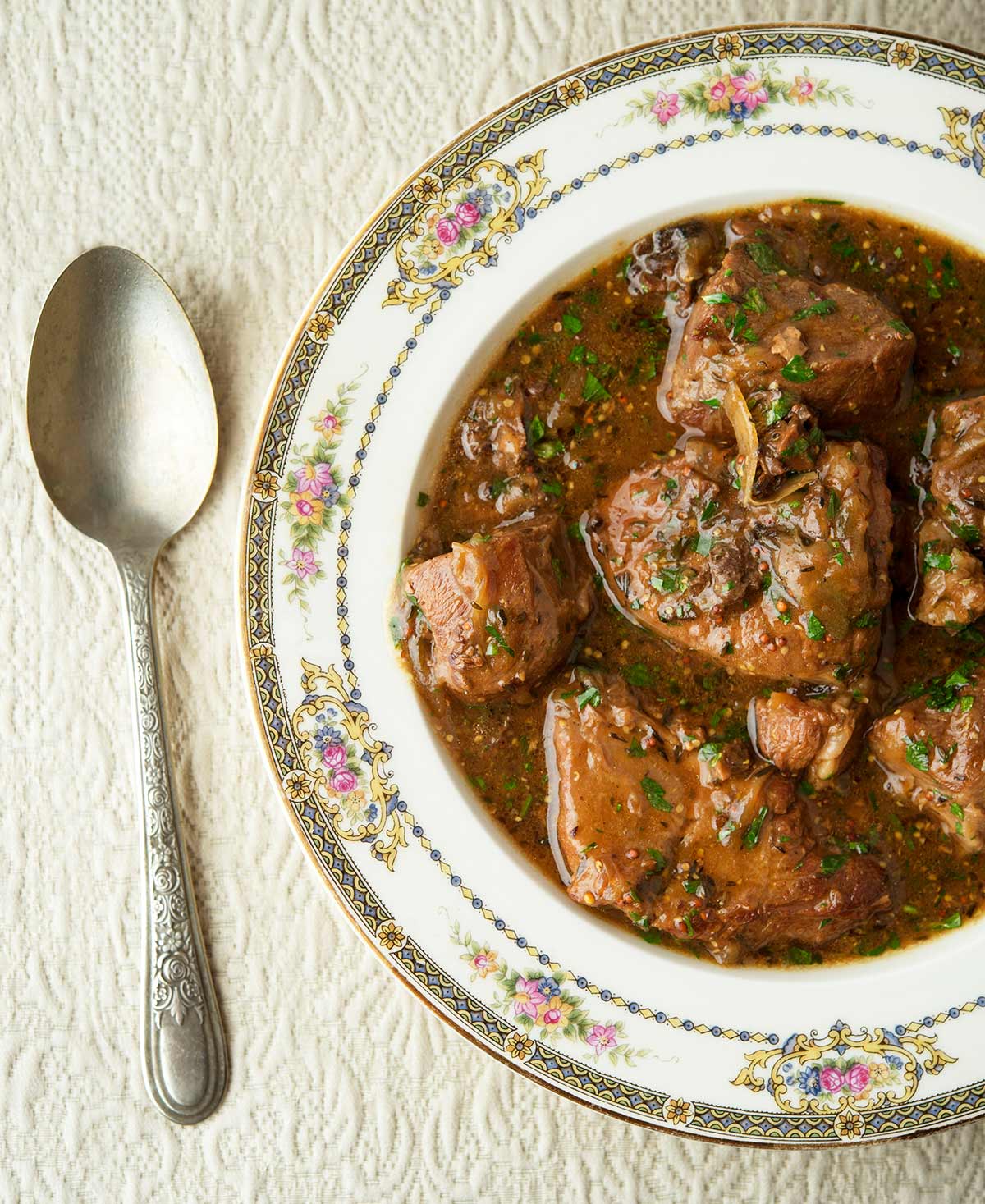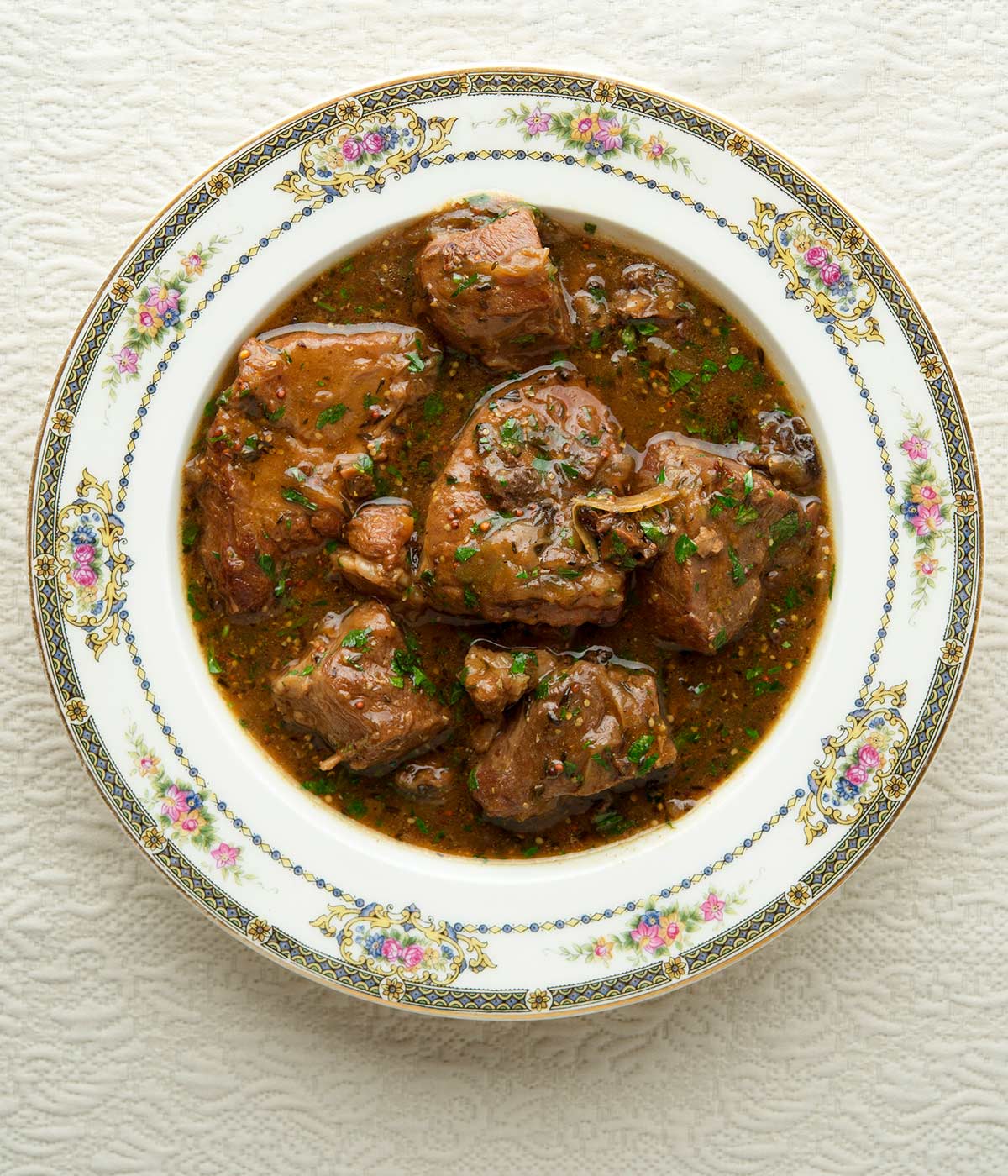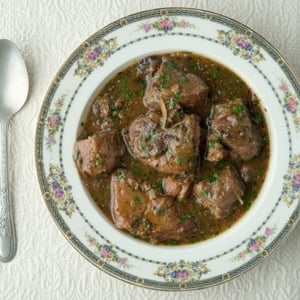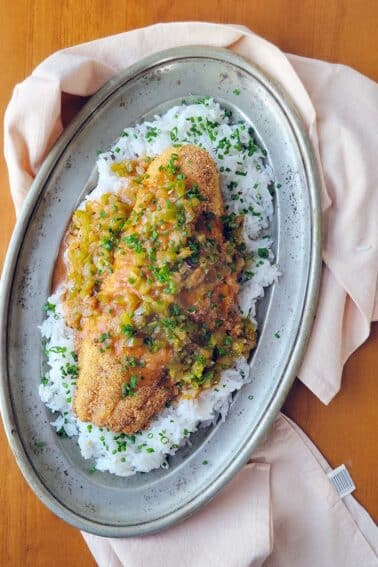As an Amazon Associate I earn from qualifying purchases.
Belgian carbonnade flamande is one of the few dishes from that little country to gain wide renown. Cousin to the more-famous French beef Bourguignon, this is a sort of hybrid stew-braise that relies on beer, not wine. Here’s how to make it.

It’s hard to say when carbonnade flamande was invented, but I’d guess sometime in the Middle Ages because it relies on a little bit of sweet-and-sour that is characteristic of that age of cooking.
Regardless of its history, carbonnade (carbon-ah’d) is a damn good dish to make with any sort of red meat. In this case, an elk shank. Deer shanks, beef shanks, or any sort of shoulder or neck meat will also work fine, too.
You can take this carbonnade recipe one of two ways: as a full-on stew, or as a braise you then eat with a knife and fork alongside a starch and a vegetable; the “stew” then becomes the sauce. Holly and I ate ours with mashed potatoes and a salad. Either way you’re in for a treat.
What does it taste like? Well, I like to use the hard-working, sinewy cuts of meat because when they finally do get tender, they get super silky and nice. So you’ve got meat falling off the bone, nestled into a lot of nicely caramelized onions, wild mushrooms and sometimes carrots, which we skipped in this version.

Other root vegetables are also good additions, like parsnips, turnips or rutabagas.
It’s the sauce/gravy/stew that makes Carbonnade flamande special though: Dark, rich with a very European version of that magic combination of sweet-spicy-sour-salty. Mustard, cider vinegar and a little bit of red currant jelly mixed in does this; you can use brown sugar if you can’t find red currant jelly.
It is really, really good. I mean, really good. Make it this weekend and you will thank me later.
The beer matters here. A lot. Make this with a real Belgian abbey ale and you will understand why Carbonnade flamande is such a famous dish.
The mustard is also pretty important, although not as much as the beer. Try to get a natural mustard, like a Dijon, not one with turmeric added for extra yellow. You don’t need color here, you need flavor. As for the mushrooms, I use dried morels or porcini. Any good dried mushroom will do.
Carbonnade flamande fits in well with a host of similar European stews that go well with wild game: Coq au vin, Polish bigos, French garbure, or English shepherd’s pie.
If you liked this recipe, please leave a ⭐️⭐️⭐️⭐️⭐️ rating and a comment below; I’d love to hear how everything went. If you’re on Instagram, share a picture and tag me at huntgathercook.
Belgian Carbonnade
Ingredients
- 3 pounds elk shank, venison shanks or shoulder meat
- 1/4 cup duck fat or unsalted butter
- Salt
- 3 onions, peeled and sliced root to tip
- 1 ounce dried mushrooms, rehydrated in 1 cup warm water and chopped
- 2 teaspoons dried thyme
- 3 or 4 tablespoons flour
- 2 tablespoons mustard, Dijon is best
- 1 cup venison or beef broth
- 1 or 2 bottles of beer, Belgian abbey ale is traditional
- 2 tablespoons cider vinegar
- 1 heaping tablespoon red currant jelly
- Black pepper
- Chopped parsley for garnish
Instructions
- If you are using elk shanks, cut the shank off the bone in large pieces, about 2 to 4 inches across; same thing if you are using shoulder meat. If you are using venison shanks, you can leave them whole if they will fit into your pot.
- Heat the duck fat or butter in a large Dutch oven or heavy lidded pot over medium-high heat. Pat the meat dry and brown it well on all sides. Salt them as they cook. You might need to do this in batches. Remove the pieces as they brown and set aside in a bowl.
- When the meat has all browned, add the sliced onions and mix well. Turn the heat down to medium and cook the onions until they are nicely browned and soft, which can take a solid 20 minutes. About halfway through, salt the onions and add the chopped mushrooms and thyme.
- When the onions are ready, return the meat and all juices from the bowl into the pot. Mix in the mustard, then add enough flour to dust everything in the pot.
- Stir in the mushroom soaking water (strain it if there is debris in it), the venison broth and at least one bottle of the Belgian beer. You want the meat to just barely be covered. Pour in more beer if need be. Bring to a simmer, add salt to taste, cover and cook slowly until the meat is really tender, anywhere from 90 minutes to 4 hours if it's a big ole' bull elk.
- Once the meat is tender, whisk in the red currant jelly, the vinegar and add black pepper to taste. Garnish with the chopped parsley. Serve with spaetzle, egg noodles or potatoes.
Notes
Nutrition
Nutrition information is automatically calculated, so should only be used as an approximation.







This was incredible. As you point out, the beer definitely does matter. I found a NZ Scotch ale (blended with 9 malts) and it was divine. The redcurrant jelly with the vinegar added at the end really made the flavors pop – absolute winner. The only challenge I had is that my love for mushrooms is an isolated one in our household so instead of the mushrooms I added fresh thyme and bay leaves, plus some carrost … and more beer! Made this with venison shanks – will try this with a venison shoulder roast next time (I’m out of hocks at the moment!) Served over pappardelle pasta. Definitely a special recipe, thanks!!